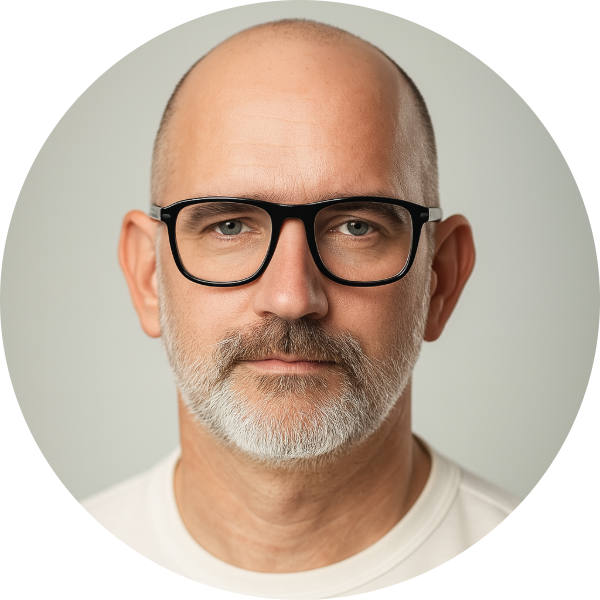Branding Beats Specs: Why Healthcare Buyers Choose Trust, Not Torque
- Philipp Striebe

- Jul 31
- 4 min read
Updated: Jul 31
“A lot of companies talk about their product—the specs, bells, and whistles. What’s often missing? How their solution actually shapes outcomes - for patients, and for the people using them.”
Clinical leader, post-IDS Cologne
This quote showed up in my LinkedIn feed a few days after the 2025 IDS Cologne, the world’s leading oral health trade show, and it hit like a gut punch.
It wasn’t new. But it was honest and necessary.
Because, while MedTech and healthcare companies flood the market with advanced features, clever engineering, and regulatory buzzwords, most are missing the mark. The truth?
Nobody buys features. People buy outcomes. And more than that, they buy belief.
Why Specs Don’t Sell (Even When They’re Brilliant)
Let’s be fair - specs matter. In regulated industries like MedTech, you don’t get to fudge functionality. But once you hit that baseline of quality and compliance? Specs stop being the differentiator.
Emotion takes over. Story kicks in. People start asking:
“Do I trust this company?”
“Do they understand what we’re up against?”
“Will they still be here when I need support next year?”
That’s not something a torque rating or 510K FDA clearance can answer.
But your brand can.
A Brand Isn’t a Logo - It’s a Signal
In healthcare B2B, branding isn’t about taglines or typography.
It’s about showing up with consistency and clarity, over time, in a way that resonates with both hearts and spreadsheets. Great branding whispers what your features can’t shout:
“You’re in good hands.”
Picture this: two companies enter the RFP process. One leads with feature slides. The other tells a story about their mission, their belief in better access to care, and their commitment to patients and providers alike.
Guess who gets the second meeting?
What Winning Healthcare Brands Actually Do
Here’s what consistently high-trust, high-growth brands get right:
Crystal-clear value proposition
→ Not “AI-powered diagnostics,” but “helps detect anomalies 40% faster, reducing missed cases and patient anxiety.”
Consistent brand voice
→ From sales decks to onboarding emails - it all sounds like the same, trusted human.
Aligned visual systems
→ Clean, coherent design signals operational readiness, even to procurement teams.
Proof through behavior
→ From sales to support to social, every touchpoint either reinforces or erodes trust.
If your brand doesn’t feel trustworthy, your features may never get the chance to prove they are.
The Invisalign Playbook: Brand First, Tech Second
Invisalign didn’t win the clear aligner market by explaining polymer properties or scan speeds.
They built a movement, anchored in confidence, transformation, and self-image.
Tools like SmileView? They’re not just features. They’re emotional on-ramps. Invisalign doesn’t sell trays, they sell future patient confidence.
And they do it with consistency. Same tone. Same mission. Across DTC and B2B touchpoints alike.
That’s brand. That’s why they lead.
The Big Myth: “Our Buyers Only Care About Performance”
No, they don’t. Or at least, not only.
Even the most rational decision-makers, clinicians, procurement directors, hospital administrators, are people first. People who remember how your rep treated them. People who associate emotion with credibility. People who trust brands that align with their values.
Purpose closes deals. Clarity builds loyalty.
If your brand doesn’t reflect the type of care they want to provide, they move on.
Branding Isn’t Soft. It’s Strategic Infrastructure.
Let’s kill the idea that branding is “nice to have. ”It’s not fluff. It’s not aesthetic dressing.
Branding is how:
Healthcare providers know you’ll integrate into their tech stack, without drama.
Hospital groups judge whether your roadmap is real, or vapor.
CFOs justify paying more for confidence, not just capability.
Companies like Straumann Group, Align, and Dentsply Sirona didn’t outlast others because they had shinier tools.
They built brand capital, earning trust, time, and second chances.
Features Fade. Brands Stick.
Today’s edge in automation, speed, or compliance?
Tomorrow’s industry standard.
But what can’t be copied is:
Your brand’s tone
Your company culture
Your track record of showing up when it matters
Your brand is your moat.
It’s how you move from vendor to partner.
From one-time sale to long-term relationship.
Testudo: Your Brand’s Armor in a Competitive Market
In ancient Rome, soldiers advanced in tight formation under a shield wall - the so-called testudo - protected, unified, and confident.
That’s what a strong brand does.
It lets healthtech companies move through regulatory fire, pricing pressure, and clinical skepticism with credibility and clarity.
How to Build That Kind of Brand
Start here:
Thought leadership with substance
→ Not fluff. Not noise. Content that clinicians and executives can actually use.
Customer experience that matches your promise
→ If your brand says “clarity,” but your support inbox says, “we’ll get back to you in 10 days”, you’re out of alignment.
Internal culture that reflects your story
→ Authentic brands are built from the inside out. When sales, marketing, and product speak in the same voice, people feel it.
And sometimes?
You need outside help from people who speak both languages: branding and healthcare.
Not just designers.
Operators.
People who know the difference between a DMF (Device Master File) and an MQL (Marketing Qualified Lead).Between ICP (Ideal Customer Profile) and IRB (Internal Review Board).
This Isn’t Optional Anymore
Healthcare is evolving - fast.
AI is reshaping diagnostics.
Patients are acting like consumers.
Clinical buyers expect clarity and conviction.
If your brand isn’t anchored in trust, you’ll get drowned in the noise.
That’s why more founders and CMOs are turning to founder-led brand studios.
Not for decoration.
But for strategic guidance from people who’ve been in the room, launching, scaling, and rebuilding brands under real pressure.
Final Word: Specs Might Open Doors. Brands Keep Them Open.
Product quality is mandatory.
But if that’s all you offer, you’re just another vendor.
In B2B healthcare, where trust is everything, branding isn’t a luxury.
It’s the multiplier.
If you’re building something with weight, with clarity, with staying power - let’s talk.
Or follow along. More frameworks and field notes are coming.
Because honestly?
We’re just getting started.




Comments